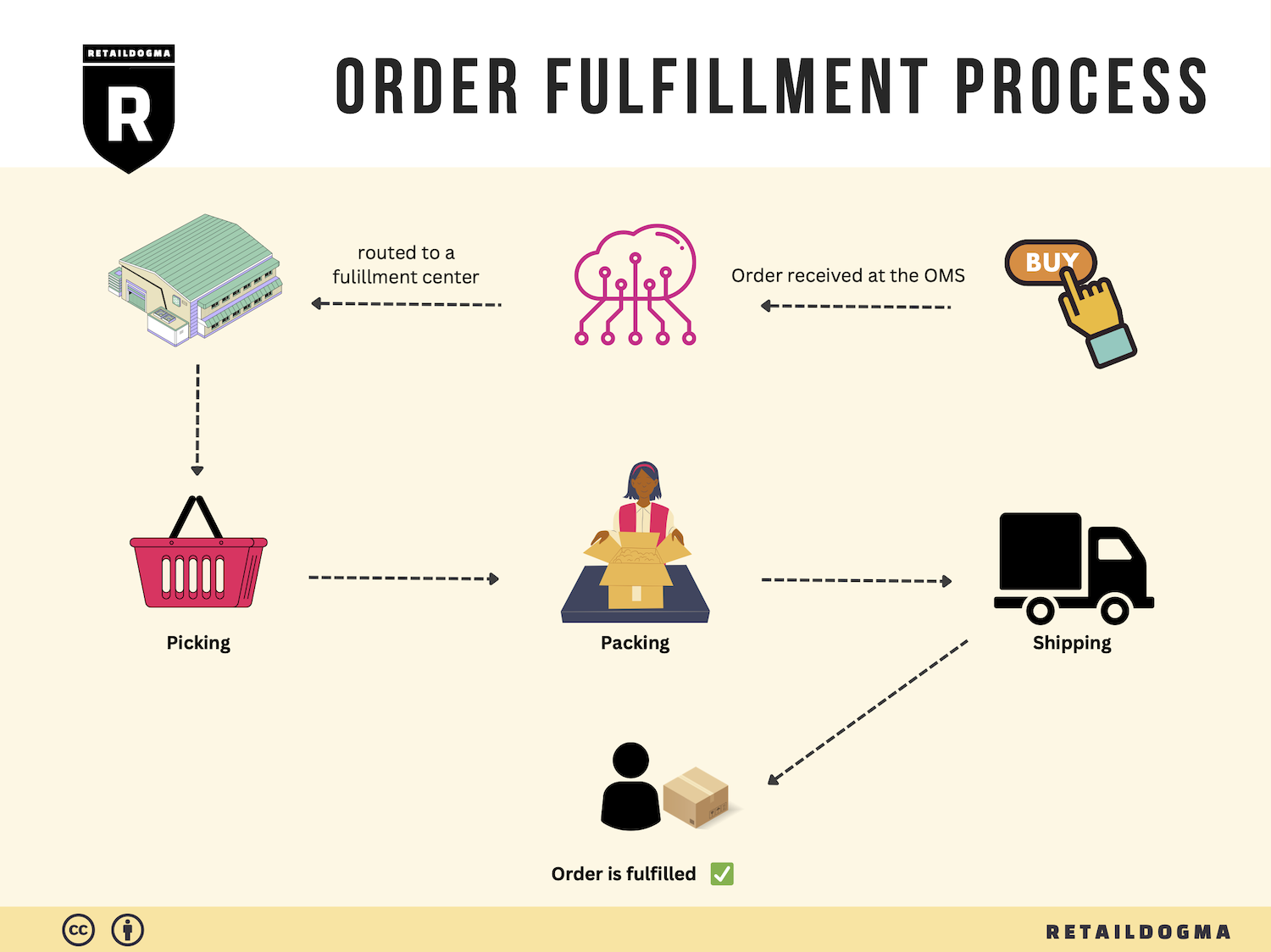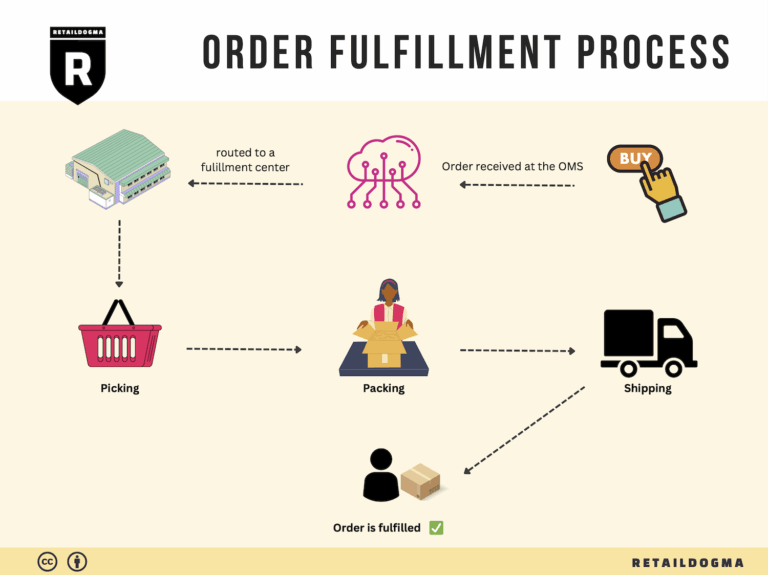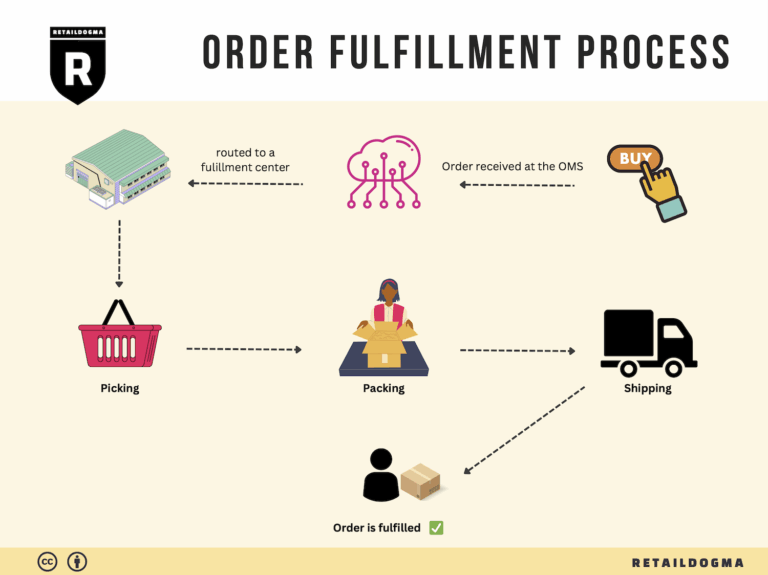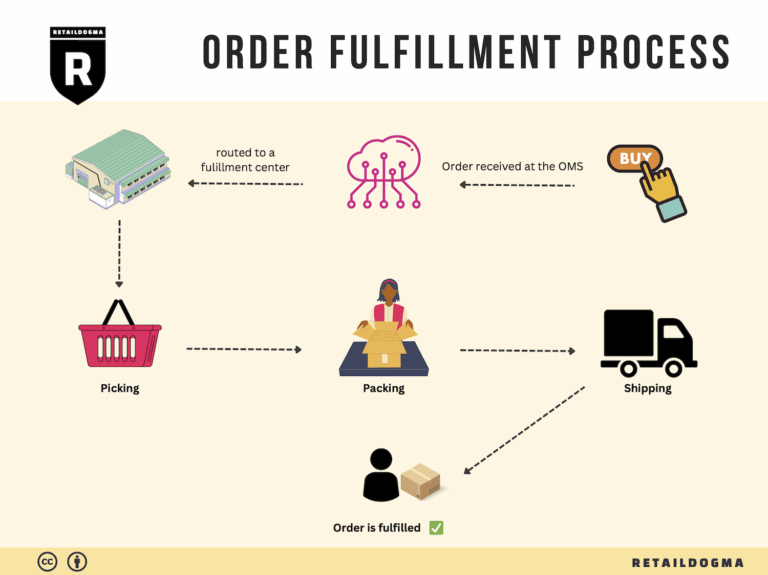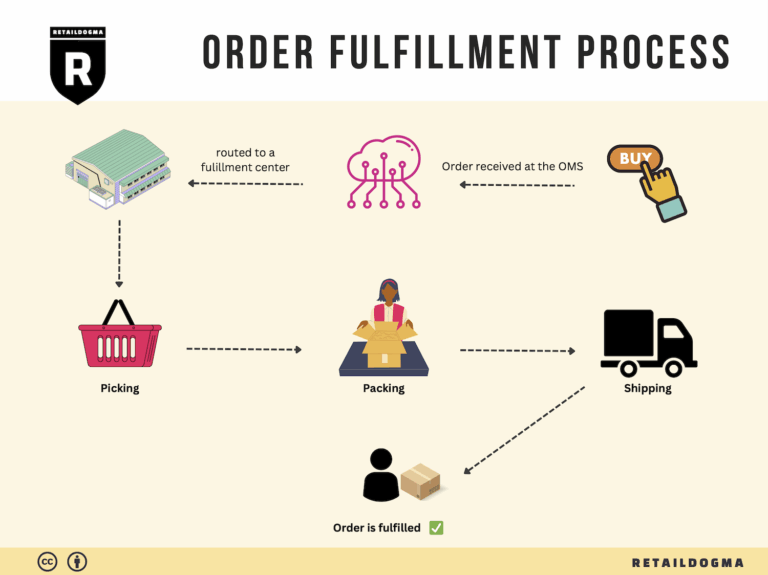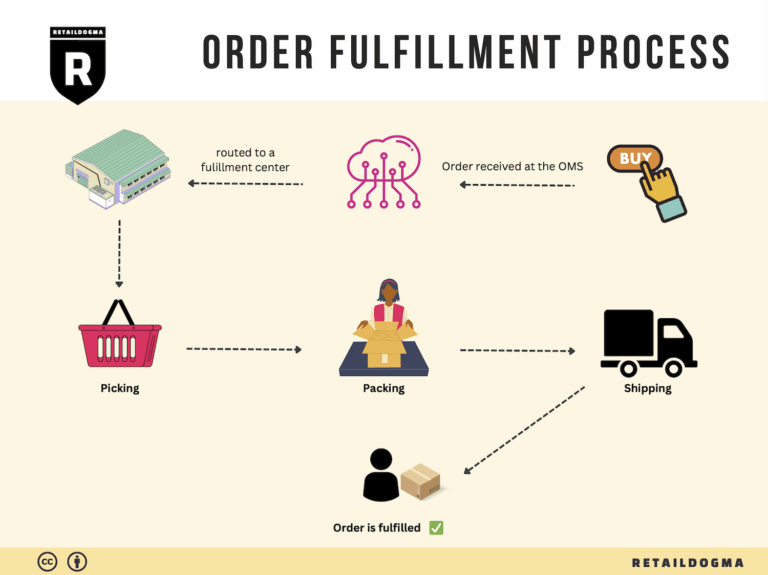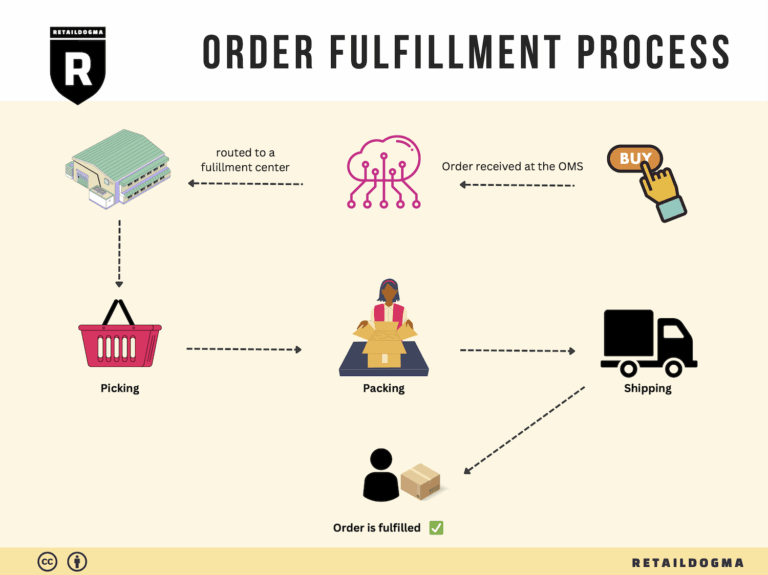Ecommerce Fulfillment Services: The Ultimate Guide (2025)
What is E-commerce Fulfillment? An Introduction for Growing Businesses
The Challenge of Order Fulfillment for Growing E-commerce Businesses
As an e-commerce business owner, you may find yourself grappling with the complexities of packing and shipping orders. The excitement of growing sales can quickly turn into overwhelm when faced with the logistics of getting products to your customers. Managing inventory, ensuring timely deliveries, and handling returns are just a few of the challenges that can bog down your operations. This is where understanding e-commerce fulfillment becomes crucial.
Fulfillment is simply the process of getting a product from your inventory to your customer’s doorstep. It encompasses everything from receiving and storing inventory to picking, packing, and shipping orders. For growing businesses, mastering this process is essential for maintaining customer satisfaction and scaling effectively.
In this guide, we will explore the various fulfillment models available to e-commerce businesses, including Third-Party Logistics (3PL) and Fulfillment by Amazon (FBA). Each model offers different advantages and challenges, and understanding these can help you choose the right one for your needs.
We will delve into the core services provided by fulfillment partners. These services typically include inventory management, order processing, packing, shipping, and returns management. By leveraging these services, you can streamline your operations, allowing you to focus on what you do best—growing your business.
Choosing the right fulfillment partner is a critical decision that can impact your bottom line. We will provide practical tips on what to look for in a fulfillment provider, including their technology capabilities, customer service, and pricing structures. Understanding how to evaluate potential partners will empower you to make informed decisions that align with your business goals.
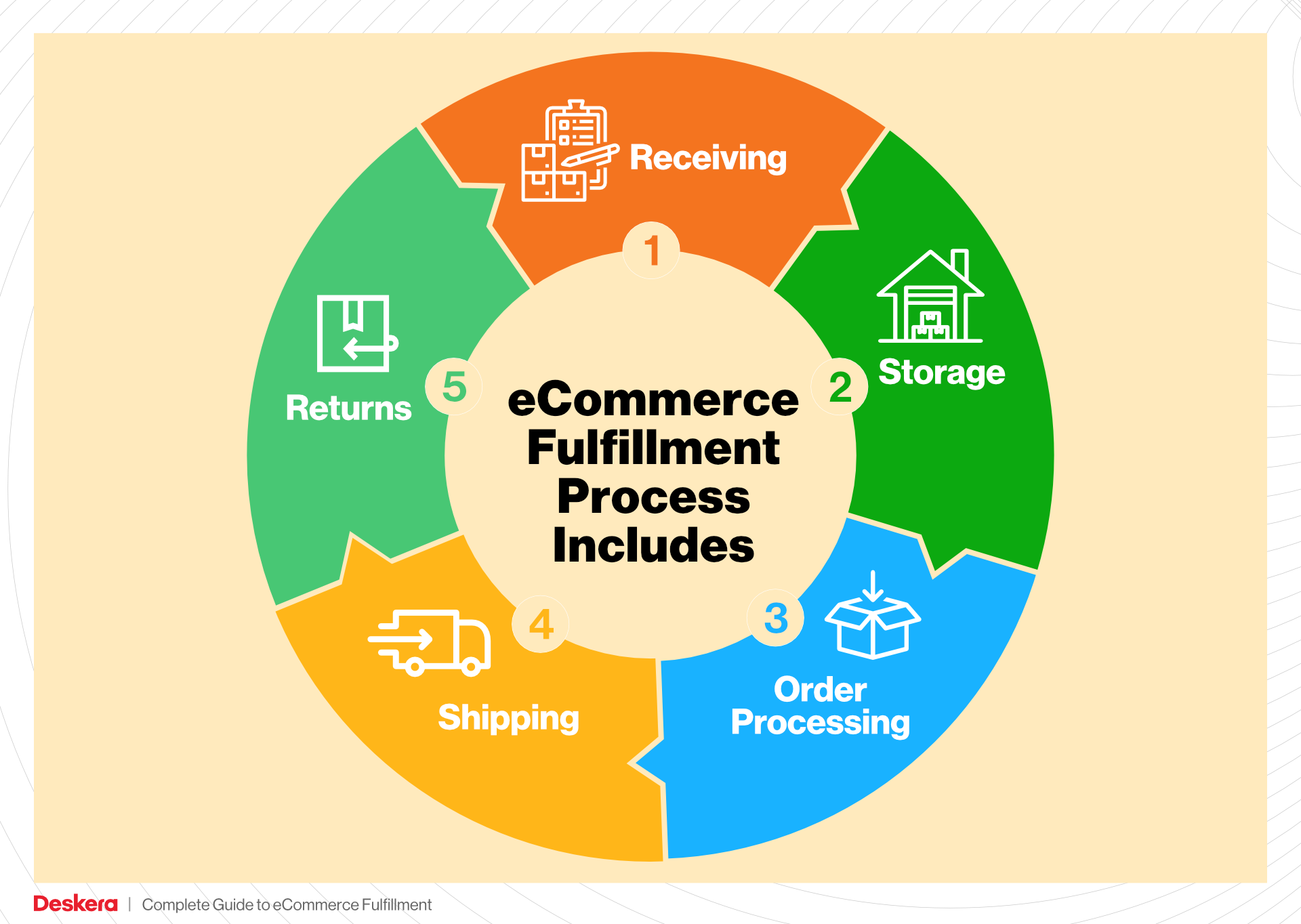
Finally, we will discuss the pricing models commonly used in fulfillment services. Having a clear understanding of the costs involved will help you budget effectively and avoid surprises down the line.
The goal of this guide is to empower you, the e-commerce entrepreneur, with the knowledge and insights needed to make smart decisions about your logistics. By gaining a comprehensive understanding of e-commerce fulfillment, you can enhance your operational efficiency, improve customer satisfaction, and ultimately drive the growth of your business.
What You’ll Learn In This Guide
- What is E-commerce Fulfillment? An Introduction for Growing Businesses
- The Order Fulfillment Process: From ‘Buy’ Button to Customer’s Door
- Comparing Fulfillment Models: In-House vs. 3PL vs. Dropshipping
- A Deep Dive into Amazon FBA: Pros, Cons, and Who It’s For
- Core Services Offered by Fulfillment Centers
- How to Choose a Fulfillment Partner: A 6-Point Checklist
- Understanding Fulfillment Pricing: A Breakdown of Common Fees
- Frequently Asked Questions (FAQs) about Fulfillment
- Conclusion: Is Outsourcing Fulfillment the Right Move for Your Business?
- Important Disclaimer
The Order Fulfillment Process: From ‘Buy’ Button to Customer’s Door
1. Receiving Inventory
The order fulfillment process begins with receiving inventory at the fulfillment center. When products arrive from suppliers, they undergo a thorough inspection to ensure quality and accuracy against purchase orders. This step is crucial because it sets the foundation for effective inventory management. Businesses often utilize a SKU (Stock Keeping Unit) system to track each product uniquely. SKUs streamline the process of identifying products, making it easier to manage stock levels and avoid discrepancies.
Proper receiving practices not only minimize errors but also enhance the efficiency of subsequent steps in the fulfillment process. By accurately logging incoming inventory, businesses can maintain a real-time view of stock levels, which is vital for meeting customer demand and planning future orders. Ensuring that the inventory is properly checked and recorded also helps prevent stockouts or overstock situations, which can negatively impact cash flow and customer satisfaction.
2. Warehouse Storage
Once inventory is received and verified, it is stored in designated areas within the fulfillment center. Effective warehouse storage is vital for optimizing space and facilitating quick access to products. This is where ABC analysis comes into play—classifying inventory based on sales frequency or value, so that high-demand items are easily accessible while less frequently sold items are stored in less accessible areas.
Proper storage methods not only maximize warehouse efficiency but also ensure that products are safeguarded against damage. Utilizing pallet racking, shelving units, or bins can help maintain an organized space. An organized warehouse translates to faster order processing times, which is critical for e-commerce businesses competing in a fast-paced market. Additionally, effective storage contributes to accurate inventory tracking, allowing businesses to fulfill orders promptly and maintain customer trust.
3. Order Picking
As orders are placed through e-commerce platforms, the next step is order picking, where warehouse staff retrieve items from storage to fulfill customer requests. This step is often guided by pick lists, which detail the items and their locations within the warehouse. Utilizing technology such as barcode scanners or pick-to-light systems can significantly enhance the efficiency and accuracy of this process.
Efficient order picking is essential for minimizing delays and ensuring that orders are accurate. Any mistakes made during this stage can lead to returns, exchanges, and dissatisfied customers. Thus, streamlining the picking process not only helps in maintaining operational efficiency but also enhances the overall customer experience. By investing in automation and training for staff, businesses can reduce errors and improve the speed of order fulfillment, directly impacting customer satisfaction and retention.
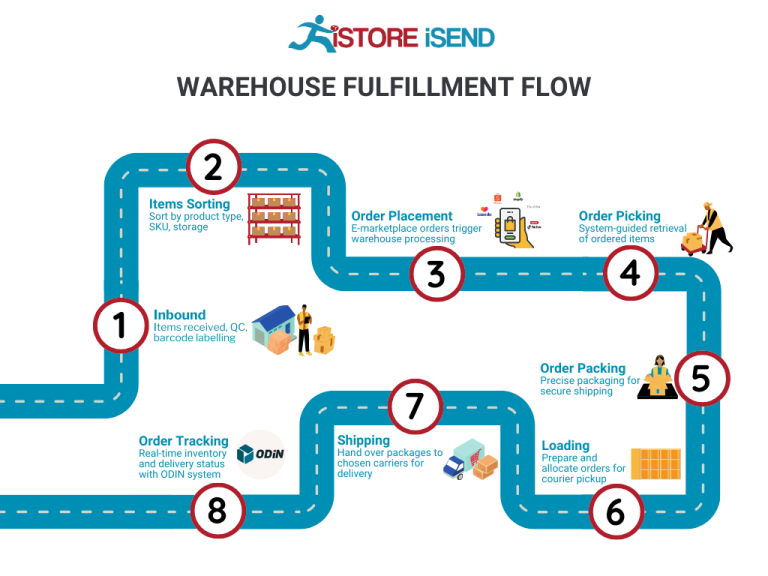
4. Order Packing
After items have been picked, they move to the packing stage. This is where products are carefully packed for shipping, ensuring they are protected during transit. The packing process often involves selecting appropriate packaging materials, labeling, and preparing shipping documents. The use of packing slips—which include order details and return instructions—can enhance the customer experience by providing clear information about their purchase.
Effective packing is crucial for preventing damage and ensuring that orders arrive in pristine condition. Additionally, it plays a role in cost management; optimizing packaging can reduce shipping costs and improve sustainability efforts. Businesses should also consider branding opportunities during this stage, as well-packaged items can enhance brand perception and customer loyalty. A thoughtful packing process not only safeguards products but also contributes to the overall impression a customer has of the brand.
5. Shipping & Delivery
The final step in the order fulfillment process is shipping and delivery, where packed orders are handed over to carriers for transport to customers. This stage includes selecting appropriate shipping methods based on factors such as cost, speed, and delivery location. Utilizing shipping software can help streamline this process by comparing rates and services from various carriers, enabling businesses to make informed decisions.
Timely shipping is critical for meeting customer expectations, especially in today’s e-commerce landscape where consumers anticipate fast delivery. The shipping process also involves tracking shipments, which provides customers with real-time updates on their order status. This transparency fosters trust and satisfaction. Additionally, managing returns effectively is essential; having a clear returns process can enhance customer loyalty and encourage repeat purchases. By optimizing shipping and delivery, businesses can significantly improve their overall fulfillment efficiency and customer satisfaction.
Comparing Fulfillment Models: In-House vs. 3PL vs. Dropshipping
Fulfillment Model Comparison Table
| Model | Who Handles Inventory | Best For (Business Stage) | Key Advantage | Key Disadvantage |
|---|---|---|---|---|
| In-House Fulfillment | The business itself | Established businesses | Full control over inventory and processes | High operational costs and resource-intensive |
| Third-Party Logistics (3PL) | The 3PL provider | Growing businesses | Scalability and expertise in logistics | Less control over inventory and processes |
| Dropshipping | Supplier/manufacturer | Startups and new entrants | Low startup costs and no inventory risk | Lower profit margins and reliance on suppliers |
In-House Fulfillment
In-house fulfillment refers to the process where an e-commerce business manages its own inventory, storage, packing, and shipping operations. This model is best suited for established businesses that have the resources and demand to justify the investment in logistics infrastructure. The key advantage of in-house fulfillment is the complete control it offers over the inventory and fulfillment processes. This control allows businesses to implement custom solutions tailored to their specific needs, maintain quality standards, and ensure faster response times to customer orders. However, this model also comes with significant disadvantages. It requires substantial investment in warehousing space, staffing, and technology, leading to high operational costs. Furthermore, managing logistics can divert attention from core business activities such as product development and marketing, making it challenging for businesses to scale efficiently.
Third-Party Logistics (3PL)
Third-party logistics (3PL) providers offer a comprehensive suite of services that include warehousing, inventory management, order fulfillment, and shipping. This model is ideal for growing businesses that want to scale their operations without the overhead associated with in-house fulfillment. By outsourcing logistics to a 3PL, companies can leverage the expertise and infrastructure of established logistics providers. The key advantage of using a 3PL is scalability; businesses can easily adjust their logistics needs based on demand fluctuations without the burden of managing physical assets. Additionally, 3PLs often have established relationships with shipping carriers, allowing for more competitive shipping rates and options. However, the downside is that businesses relinquish some control over their inventory and fulfillment processes. This can lead to challenges in maintaining brand consistency and ensuring customer satisfaction if the 3PL does not meet the expected service levels.
Dropshipping
Dropshipping is a fulfillment model where the retailer does not hold inventory but instead relies on suppliers to fulfill orders directly to customers. This model is particularly advantageous for startups and new entrants into the e-commerce space, as it requires minimal upfront investment and eliminates the risks associated with holding inventory. The key advantage of dropshipping is the low barrier to entry; businesses can launch their e-commerce stores without the need for significant capital investment in inventory or warehousing. Furthermore, dropshipping allows for a wide range of products to be offered without the associated risks of unsold inventory. However, this model also has notable disadvantages. Profit margins tend to be lower compared to other fulfillment models, as retailers often rely on suppliers who may set higher prices. Additionally, dropshipping can lead to longer shipping times and potential quality control issues, as the retailer has limited oversight over the fulfillment process. This reliance on third-party suppliers can also complicate customer service, as any issues with product quality or shipping delays must be addressed through the supplier.
Conclusion
Choosing the right fulfillment model is crucial for the success of an e-commerce business, and each model has its unique benefits and challenges. In-house fulfillment offers control and customization but at a higher cost and resource commitment, making it suitable for established businesses. On the other hand, 3PL provides scalability and logistics expertise, making it an excellent choice for growing companies looking to optimize their operations without significant overhead. Lastly, dropshipping presents a low-risk entry point for startups, although it comes with its own set of challenges, such as lower profit margins and reliance on suppliers. Business owners must carefully evaluate their current needs, growth plans, and operational capabilities to determine the best fulfillment model for their specific situation.
A Deep Dive into Amazon FBA: Pros, Cons, and Who It’s For
Understanding Fulfillment by Amazon (FBA)
Fulfillment by Amazon (FBA) is a service that allows e-commerce sellers to store their products in Amazon’s fulfillment centers. Amazon takes care of storage, packaging, shipping, and customer service for these products. This service is particularly appealing for businesses looking to leverage Amazon’s vast logistics network and customer base.
When a customer orders a product, Amazon handles the entire fulfillment process. This includes picking the item from the warehouse, packing it for shipment, and delivering it to the customer. Additionally, Amazon manages returns and customer inquiries related to the fulfillment of these products. FBA also allows sellers to tap into Amazon Prime, making their products eligible for expedited shipping and greater visibility on the platform.
How FBA Works
- Account Setup: Sellers create an Amazon Seller Account and opt for FBA.
- Inventory Shipment: Sellers prepare and ship their inventory to Amazon’s fulfillment centers. They must label their products correctly according to Amazon’s guidelines.
- Storage: Once received, Amazon stores the products in their warehouses. Sellers can monitor their inventory levels through the Amazon Seller Central dashboard.
- Order Processing: When a customer places an order, Amazon automatically picks, packs, and ships the product from their nearest fulfillment center.
- Customer Service: Amazon handles all customer service inquiries and returns, providing sellers with more time to focus on other aspects of their business.
- Payment: After the sale, sellers receive payments from Amazon, minus the FBA fees associated with storage and fulfillment.
Pros of Using FBA
1. Prime Eligibility
One of the biggest advantages of FBA is that products become eligible for Amazon Prime. This means that Prime members can receive items with free two-day shipping, significantly boosting the likelihood of purchase and increasing sales.
2. Customer Trust
Amazon is a well-established and trusted brand. By utilizing FBA, sellers benefit from Amazon’s reputation, which can lead to higher conversion rates and customer loyalty. Customers often feel more secure buying products that are fulfilled by Amazon due to their robust return policy and customer service.
3. Multi-Channel Fulfillment
FBA isn’t limited to sales made on Amazon alone. Sellers can use FBA to fulfill orders from other sales channels, such as their own websites or other e-commerce platforms. This flexibility allows businesses to centralize their fulfillment operations and streamline logistics.
4. Simplified Logistics
FBA simplifies the logistics process. Sellers do not have to worry about warehousing, packing, or shipping, allowing them to focus on scaling their business, marketing, and product development.

5. Advanced Analytics
Amazon provides sellers with analytics and reporting tools to track sales, inventory levels, and customer behavior. This data can be invaluable for making informed business decisions.
Cons of Using FBA
1. High Fees
FBA comes with a range of fees, including storage fees for keeping products in Amazon’s warehouses and fulfillment fees for each item sold. These costs can accumulate quickly, particularly for slow-moving inventory, potentially eating into profit margins.
2. Strict Inventory Rules
Amazon enforces strict inventory management rules, including guidelines on how much inventory can be stored and how long products can remain in their warehouses. Sellers must carefully manage their inventory to avoid long-term storage fees and potential penalties.
3. Commingling Risks
FBA uses a commingling process, where products from different sellers may be stored together. This can lead to risks if a customer receives a defective item from another seller or if inventory is lost. Sellers may have limited recourse in these situations.
4. Loss of Control
By using FBA, sellers relinquish a degree of control over their fulfillment processes. Issues such as shipping delays or order inaccuracies are managed by Amazon, which can impact customer satisfaction and seller reputation.
5. Limited Branding Opportunities
Products shipped through FBA have Amazon’s branding on the packaging, which may limit sellers’ ability to promote their own brand identity. For businesses focused on building a unique brand experience, this can be a drawback.
Who is FBA Best For?
Fulfillment by Amazon is particularly well-suited for:
-
Small to Medium-Sized E-commerce Businesses: Businesses that may not have the resources to manage their own logistics operations can benefit from the scalability and efficiency of FBA.
-
Sellers with High Inventory Turnover: If you have products that sell quickly, FBA can streamline the fulfillment process, allowing you to focus on acquiring more inventory and expanding your product line.
-
Brands Seeking Prime Visibility: If your goal is to reach Amazon’s vast customer base and gain visibility through Prime membership, FBA is a powerful tool.
-
Entrepreneurs Looking to Scale: For those looking to grow their business without the complexities of managing logistics, FBA can provide the support necessary to expand into new markets and reach more customers.
In conclusion, while Fulfillment by Amazon offers numerous advantages, including Prime eligibility and simplified logistics, it also comes with its own set of challenges, such as high fees and strict inventory rules. Assessing whether FBA aligns with your business model and goals is crucial for determining its suitability for your e-commerce operations.
Core Services Offered by Fulfillment Centers
Inventory Management & Warehousing
Inventory management and warehousing are foundational services provided by fulfillment centers. This involves the systematic control of inventory levels, including receiving, storing, and tracking goods. Fulfillment centers utilize advanced inventory management systems that integrate with e-commerce platforms, allowing businesses to have real-time visibility of their stock.
Benefits:
For e-commerce businesses, effective inventory management is critical for maintaining optimal stock levels and ensuring timely fulfillment. By outsourcing this function to a fulfillment center, businesses can reduce overhead costs associated with maintaining their own warehouse. Additionally, fulfillment centers often have sophisticated systems that help predict inventory needs based on sales trends, thus minimizing the risks of overstocking or stockouts. This proactive approach not only enhances cash flow but also boosts customer satisfaction by ensuring that products are available for immediate shipment.
Pick and Pack Services
Pick and pack services refer to the process of selecting products from inventory (picking) and preparing them for shipment (packing). Fulfillment centers employ efficient picking methods, such as batch picking or wave picking, to streamline the order fulfillment process. Once items are picked, they are carefully packed to ensure they arrive at the customer’s doorstep in perfect condition.
Benefits:
This service is particularly advantageous for e-commerce businesses looking to scale. By leveraging the fulfillment center’s expertise and technology, businesses can significantly reduce order processing times. Fast and accurate order fulfillment not only improves operational efficiency but also enhances the customer experience, leading to higher satisfaction rates and repeat purchases. Moreover, fulfillment centers often utilize high-quality packing materials and techniques, which can reduce damage during transit, further safeguarding a brand’s reputation.
Kitting and Assembly
Kitting and assembly involve grouping individual items together to create a ready-to-sell product. This can include assembling products that require multiple components or creating gift sets and bundles. Fulfillment centers offer this service, allowing businesses to present their products in a more appealing way and streamline the purchasing process.
Benefits:
For e-commerce businesses, kitting can lead to increased sales by offering customers more value through bundled products. It simplifies the shopping experience, as customers can purchase a complete set rather than individual items. Additionally, this service can help manage inventory more effectively by allowing businesses to offer a variety of product combinations without needing to hold excessive stock of each item. Kitting also reduces the time customers spend searching for related products, which can lead to higher conversion rates and improved customer satisfaction.
Returns Management (Reverse Logistics)
Returns management, or reverse logistics, is the process of handling returned items efficiently. This includes receiving, inspecting, restocking, and processing refunds or exchanges. Fulfillment centers specialize in managing returns, ensuring that the process is streamlined and customer-friendly.
Benefits:
In the e-commerce landscape, returns are inevitable, and how a business handles them can significantly impact customer loyalty. By outsourcing returns management to a fulfillment center, e-commerce businesses can ensure a seamless experience for customers. Quick processing of returns can lead to faster refunds or exchanges, which enhances customer satisfaction and encourages repeat business. Additionally, fulfillment centers can analyze return data to identify trends, helping businesses address potential issues with their products or fulfillment processes. This valuable feedback can inform product development and marketing strategies, ultimately leading to improved profitability.
In conclusion, utilizing the core services offered by fulfillment centers—inventory management and warehousing, pick and pack services, kitting and assembly, and returns management—can significantly enhance the operational efficiency of e-commerce businesses. By outsourcing these critical functions, companies can focus on their core competencies, such as product development and marketing, while ensuring a seamless experience for their customers. As e-commerce continues to grow, partnering with a reliable fulfillment center can provide the competitive edge needed to thrive in a dynamic marketplace.
How to Choose a Fulfillment Partner: A 6-Point Checklist
Location & Warehouse Network
Importance:
The geographical location of your fulfillment partner’s warehouses can significantly impact shipping times and costs. A strategically located partner can reduce delivery times to your customers and optimize shipping expenses.
Questions to Ask:
– Where are your warehouses located? How does this align with my target customer base?
– Do you have multiple warehouse locations? If so, how do you determine which warehouse to ship from?
– What is your average shipping time to my primary markets?
– Are there any additional fees for shipping from different warehouse locations?
Technology & Integrations
Importance:
In today’s e-commerce landscape, technology plays a crucial role in streamlining operations. A fulfillment partner that offers robust technology solutions can facilitate real-time inventory tracking, order management, and seamless integration with your e-commerce platform.
Questions to Ask:
– What technology platforms do you utilize for inventory management and order processing?
– Can your system integrate with my e-commerce platform (e.g., Shopify, WooCommerce)?
– Do you offer real-time tracking for shipments and inventory?
– What kind of reporting and analytics do you provide to help me monitor performance?
Specializations (e.g., Cold Storage, Oversized Items)
Importance:
Depending on the nature of your products, you may require specific services that not all fulfillment centers offer. Understanding your partner’s specializations can help ensure they can meet your unique needs.
Questions to Ask:
– Do you offer specialized services such as cold storage, handling of hazardous materials, or oversized item storage?
– What experience do you have in managing the fulfillment of products similar to mine?
– How do you ensure the quality and safety of specialized items during storage and shipping?
– Are there any additional costs associated with these specialized services?
Scalability & Capacity
Importance:
As your business grows, your fulfillment needs will evolve. Choosing a partner that can scale with your business ensures you won’t have to switch providers as your order volume increases, saving time and resources.
Questions to Ask:
– What is your current capacity, and how do you handle peak seasons or surges in order volume?
– Can you provide examples of how you have supported clients through periods of rapid growth?
– What measures do you have in place to ensure you can accommodate increased demand?
– Are there any limitations to your scalability that I should be aware of?
Pricing and Contracts
Importance:
Understanding the pricing structure and contract terms is vital to ensure that you can manage costs effectively. Hidden fees can quickly erode profit margins, so clarity is essential.
Questions to Ask:
– What is your pricing model (e.g., per order, per item, monthly fees)?
– Are there any additional fees I should be aware of, such as for storage, handling, or returns?
– What are the terms of your contract? Is there flexibility for scaling up or down?
– How often do you review pricing, and what factors influence potential changes?
Customer Support & Reviews
Importance:
Reliable customer support can be a game-changer, especially during critical times such as peak seasons or when dealing with unexpected issues. Reviews and testimonials can provide insight into a partner’s reliability and service quality.
Questions to Ask:
– What customer support options do you offer (e.g., phone, email, live chat)?
– What are your average response times for customer inquiries?
– Can you provide references or case studies from similar businesses?
– How do you handle issues or complaints, and what is your escalation process?
Conclusion
Choosing the right fulfillment partner is a critical decision that can significantly impact your e-commerce business’s success. By carefully considering these six points and asking the right questions, you can identify a partner that not only meets your current needs but also supports your future growth. Remember, a successful partnership is built on clear communication, mutual understanding, and aligned goals, so take the time to thoroughly evaluate potential partners before making your decision.
Understanding Fulfillment Pricing: A Breakdown of Common Fees
Initial Setup Fees
When partnering with a third-party logistics (3PL) provider, businesses often encounter initial setup fees. These charges cover the costs associated with integrating your e-commerce systems with the 3PL’s fulfillment platform. This may include configuring software, establishing inventory management protocols, and customizing the workflow to suit your operational needs.
Setup fees can vary significantly based on the complexity of the integration and the specific requirements of your business. For instance, a straightforward connection with a single e-commerce platform may incur minimal fees, while a more complex setup involving multiple sales channels and extensive customization can lead to higher costs. It’s crucial to clarify what services are included in these fees to avoid unexpected expenses.
Receiving Fees
Receiving fees are charged when your inventory arrives at the fulfillment center. This fee compensates the 3PL for the labor and resources required to unload, inspect, and store your products. Typically, these fees are calculated based on the volume of goods received, measured either in weight (pounds or kilograms) or by the number of pallets or bins.
For example, a 3PL may charge a flat rate per pallet received, or a variable fee based on the total weight of the shipment. It’s essential to account for these fees in your overall fulfillment costs, especially if you anticipate frequent shipments, as they can add up quickly.
Storage Fees (per pallet/bin)
Storage fees are incurred for the space your inventory occupies within the fulfillment center. These fees are usually charged on a monthly basis and can be calculated either per pallet or per bin, depending on how your products are stored.
For instance, if your goods are stored on pallets, you might be charged a set fee for each pallet per month. Alternatively, if your items are stored in bins, the fee might be based on the number of bins used. Understanding how storage fees are structured is vital for managing your inventory efficiently and minimizing costs. Consider negotiating terms with your 3PL provider, especially if you plan to maintain a high volume of inventory.
Pick & Pack Fees (per item/order)
Pick and pack fees are one of the most significant costs associated with order fulfillment. These fees cover the labor involved in picking items from inventory and packing them for shipment. Typically, these fees are charged per item or per order, and they can vary based on the complexity of the packing process.
For example, a basic pick and pack fee may be set for each item picked, while additional charges may apply for special packing requirements, such as gift wrapping or kitting (assembling multiple products into a single package). To get an accurate estimate, consider the average number of items per order and any special handling needs that may increase costs.
Shipping Fees
Shipping fees encompass the costs associated with transporting your products to customers. These fees can vary widely depending on several factors, including the shipping method (standard, expedited, etc.), the destination (domestic or international), and the weight and dimensions of the package.
Most 3PL providers offer multiple shipping options, allowing you to choose the best balance between cost and delivery speed. Shipping fees are typically calculated based on carrier rates, which can fluctuate due to market conditions. Many 3PLs also offer negotiated rates with shipping carriers, which can lead to cost savings for your business. Always inquire about the shipping options available and any associated discounts.
Tips for Getting an Accurate Quote
-
Provide Detailed Information: When requesting a quote, offer comprehensive details about your business, including inventory volume, order frequency, and specific fulfillment requirements. This will help the 3PL provider give you a more accurate estimate.
-
Ask About All Fees: Ensure you understand all potential fees, not just the ones that seem most relevant. Inquire about hidden charges, such as returns handling or seasonal surcharges.
-
Negotiate Terms: Don’t hesitate to negotiate pricing and terms. Many 3PL providers are open to discussions, especially if you can commit to a long-term partnership or provide a high volume of business.
-
Evaluate Multiple Providers: Request quotes from several 3PL companies to compare pricing structures and services. This will give you a better sense of the market and help you identify the best fit for your needs.
-
Consider Scalability: Choose a 3PL that can grow with your business. Inquire about how fees may change as your order volume increases and what additional services they offer for scaling operations.
By understanding these common fees and how they are calculated, you can make informed decisions that will optimize your fulfillment strategy and drive your e-commerce success.
Frequently Asked Questions (FAQs) about Fulfillment
1. What is a 3PL fulfillment center?
A 3PL (Third-Party Logistics) fulfillment center is a specialized facility that manages the logistics of e-commerce businesses. It handles everything from receiving and storing inventory to picking, packing, and shipping orders to customers. By outsourcing these operations, businesses can focus on their core activities like product development and marketing.
2. What’s the difference between a warehouse and a fulfillment center?
While both warehouses and fulfillment centers store goods, they serve different functions. Warehouses are primarily for storage and may keep items for extended periods. In contrast, fulfillment centers are dynamic hubs that focus on quickly processing orders, managing inventory turnover, and ensuring timely shipping to enhance customer satisfaction.
3. What services do 3PL fulfillment companies provide?
3PL fulfillment companies offer a range of services including inventory management, order processing, picking and packing, shipping, returns management, and sometimes additional services like kitting, assembly, and technology integration. They streamline the entire supply chain process for e-commerce businesses.
4. How does the 3PL fulfillment process work?
The 3PL fulfillment process begins when products arrive at the fulfillment center. The items are stored until an order is placed. Upon receiving an order, the fulfillment center picks the items, packs them, and ships them to the customer. This process is efficient and designed to minimize delivery times.
5. How much do fulfillment services cost?
Fulfillment service costs vary based on several factors, including the volume of orders, the size and weight of the products, storage requirements, and additional services needed (like returns handling or kitting). Businesses should request detailed pricing quotes from potential 3PL providers to understand the costs specific to their needs.
6. What are the benefits of using a 3PL fulfillment center?
Using a 3PL fulfillment center allows businesses to reduce overhead costs associated with warehousing and staffing. It provides access to expert logistics solutions, faster shipping, and improved customer service. Additionally, it enables businesses to scale operations without the need for significant investments in infrastructure.
7. How do I choose the right 3PL fulfillment partner?
When choosing a 3PL fulfillment partner, consider factors such as the provider’s experience in your industry, the range of services offered, technology capabilities (like integration with e-commerce platforms), pricing structure, and customer support. Reading reviews and seeking references can also help in making an informed decision.
8. Can a 3PL fulfillment center handle returns management?
Yes, most 3PL fulfillment centers are equipped to manage returns efficiently. They process returned items, inspect them, restock inventory, and handle customer communications regarding returns. This service is crucial for maintaining customer satisfaction and streamlining the returns process.
9. What technology do 3PL fulfillment centers use?
3PL fulfillment centers utilize various technologies, including warehouse management systems (WMS), inventory tracking software, and order management systems (OMS). These technologies help optimize operations, improve accuracy, and provide real-time data on inventory and order status.
10. Is a fulfillment center necessary for small e-commerce businesses?
While not strictly necessary, using a fulfillment center can be highly beneficial for small e-commerce businesses. It allows them to scale operations, manage inventory more efficiently, and focus on marketing and sales rather than logistics. As demand grows, partnering with a fulfillment center can provide the infrastructure needed to meet customer expectations.
Conclusion: Is Outsourcing Fulfillment the Right Move for Your Business?
The Benefits of Outsourcing Fulfillment
Outsourcing your fulfillment to a third-party logistics (3PL) provider can dramatically transform your e-commerce operations. By leveraging the expertise of a 3PL, businesses can save invaluable time and resources that would otherwise be spent on managing inventory, packing orders, and handling shipping logistics. This allows you to focus on core business activities such as product development and marketing, which are essential for driving growth.
Scalability is another significant advantage of utilizing a fulfillment service. As your business expands, so do your logistics needs. A reliable 3PL partner can seamlessly scale their operations to accommodate increased order volumes, seasonal fluctuations, or even the introduction of new product lines. This flexibility ensures that you can meet customer demands without the stress of overextending your resources.
Moreover, partnering with an experienced fulfillment provider grants you access to industry best practices and advanced technology that may be cost-prohibitive to implement in-house. This includes sophisticated inventory management systems, data analytics, and streamlined shipping solutions, all of which contribute to enhanced customer satisfaction and loyalty.
Choosing the Right Partner for Growth
While the benefits of outsourcing fulfillment are clear, it’s crucial to select the right 3PL partner that aligns with your business objectives and values. Evaluate potential partners based on their service offerings, technology integration, customer support, and scalability options. A strong partnership can be the catalyst for your e-commerce success.
Take Action
Now is the time to assess your current shipping process. Are you struggling with order fulfillment, or are you seeking ways to optimize operations? Conduct an audit of your logistics strategy and consider whether a fulfillment partner could be the key to unlocking your business’s full potential. By making an informed decision, you can elevate your operations and focus on what truly matters—growing your business.
Important Disclaimer
⚠️ Important Disclaimer
The information in this guide is for educational purposes. Fulfillment services, pricing, and platform features change frequently. Always conduct your own due diligence and consult with providers directly before making business decisions.
